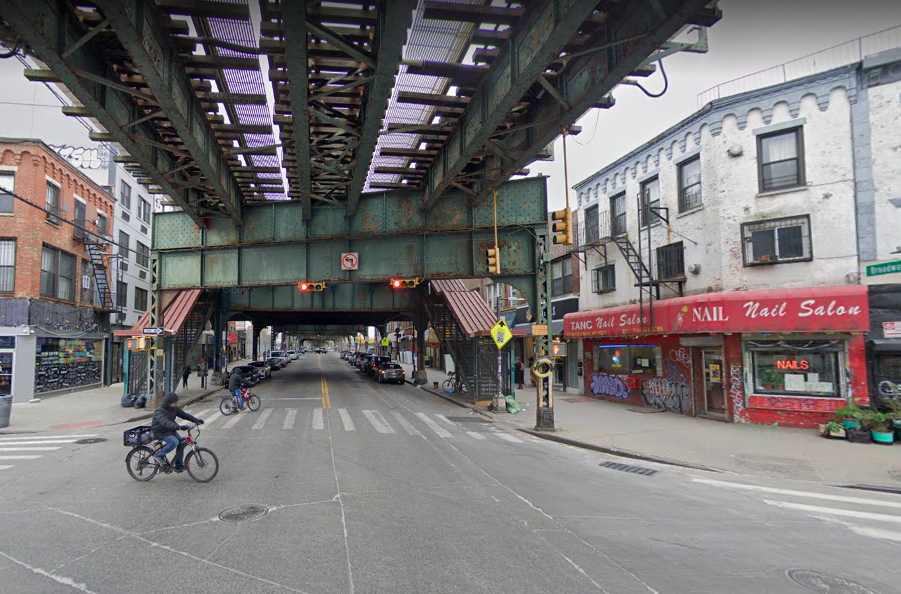He had been arriving home on the J train in the brisk hours of the morning from an overnight shift at Home Depot when he noticed he was being followed as his train rolled into the Kosciuszko Street station.
“You’re going to die today,” the man told him shortly before stabbing him with what has been described as a “large pocket knife,” according to a report from the New York Post.
An MTA employee assisted him in fighting off the assailant, who then ran off and remains at large. The New York City Police Department’s 81st Precinct put out stills from security camera footage detailing the alleged attacker on Monday.
?#WANTED? The Brooklyn Transit Robbery Squad is attempting to identify this subject. He is sought after for an ASSAULT that occurred on Feb.6, 2021, at the Kosciusko 'J' line station #BedStuy. Help us find him!
Have info? Telephone @NYPDTips at 800-577-TIPS pic.twitter.com/lTSHutk7QX
— NYPD 81st Precinct (@NYPD81Pct) February 8, 2021
An act of such brazen violence near the transit system brings to mind the spate of recent assaults at the Morgan Avenue L Station. After arresting one suspect in connection with those assaults, a 50 year old man, the police later arrested a younger man, Khari Covington, last month and accused him of eight counts of assault as a hate crime and one more count of robbery as a hate crime. Covington was identified by the Post as a “homeless man” and more recently by the Times as a “parolee.”
This reflects two different ways of looking at what many feel to be an uptick in randomized violence on the trains: historically unsafe spaces that are presumed to have become safer as the territory above ground gentrified. (In fact, an MTA report last year found that the transit system has seen a 30% decline in felonies, though assaults are up almost 28%.) It’s no coincidence that this weekend’s assault has already become politicized by police unions, which have become regular sources of reactionary, right-wing agitation in New York City politics and beyond. On Monday, two of them — the Sergeants Benevolent Association and the Detectives’ Endowment Association —reacted within hours of each other on Twitter. They used the weekend’s attack at the Kosciuszko Street station to accuse City Hall of ignoring “the epidemic of crime” and continuing “to push ill-conceived policies instead of caring for the victims.”
The oblique reference to ‘ill-conceived policies,’ if the flurry of Post clippings on the subject are to be believed, involve efforts to restrict police activity in interacting with the mentally ill at train stations. (In the Post’s report, the tabloid reporter grasps at her thesaurus to describe the unknown attacker on Saturday as “a maniac,” a “nut” and a “crazed man.”) It’s an angle that appears to be impacting policy amid the COVID-19 pandemic — the MTA’s decision to shutter all-night train service has not saved the city any money in cleaning the trains, but has forced the homeless to suffer the freezing night. Another project, involving removing the number of benches at stations, appears to have been done directly for that purpose.
These efforts to bully the vulnerable from using public services, nonetheless, do not appear to have done very much to abate what the Post, just yesterday, declared to be a “wave of violence” rocking the MTA system. In fact, the newspaper doesn’t think that enough has been done and uses a quote from an anonymous “retired transit supervisor” to lay the blame on “homeless and mentally ill people.”
A more local solution to the problem of increased violence near train stations appears to be coming from activists propelled by last summer’s protests against police violence and, accordingly, it doesn’t involve the police. SafeWalks NYC, a Instagram group, formed last month in response to the attacks at the Morgan Avenue station and it still organizes volunteers to patrol the stations in groups in order to deter attacks. On Instagram, the group told Bushwick Daily on Tuesday that it’s in the midst of “expansion efforts” and is currently offering volunteer safe walks to concerned residents at “all stations in Bushwick.”
If you have tips on the case, reach out to [email protected]
Cover photo credit: Google Maps
For more news, sign up for Bushwick Daily’s newsletter.
Join the fight to save local journalism by becoming a paid subscriber



